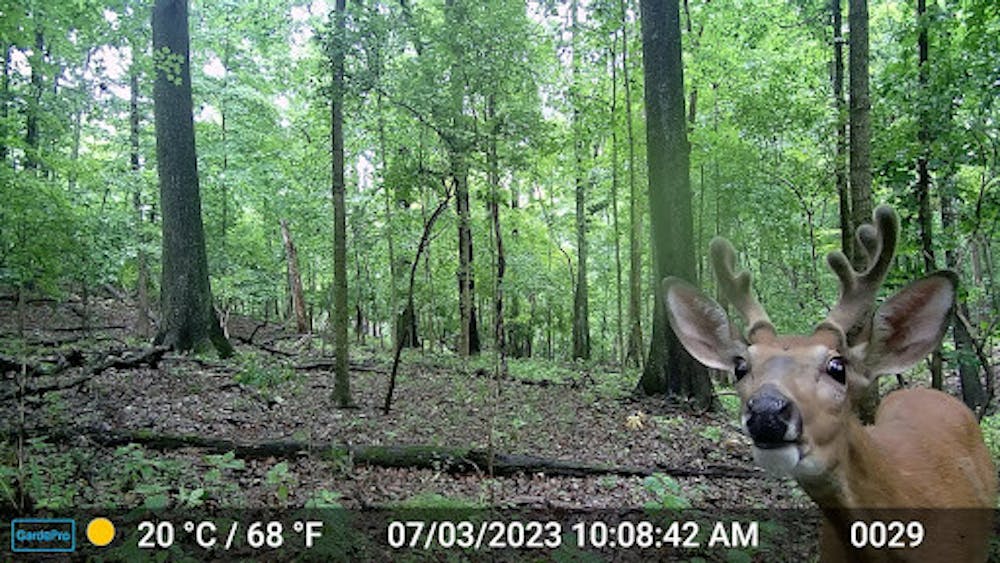Deer populations in Miami University’s Natural Areas (MUNA) have skyrocketed in the past decades, and the forest can’t keep up. This increase in population has led to biodiversity loss and created a void for invasive plants to grow and take over the land.
Miami responded to this problem in its backyard, and with hunting season gearing up across the state, the natural areas will be open to deer hunting from Nov.16- Feb. 2 as a further continuation of the deer management plan, which has been in practice for the past few years.
Zach McCoy, a senior sports media and communications double major, who previously hunted in the program, explained the effect of high deer traffic.
“Hueston Woods is a big public hunting area… which gets high [foot] traffic, and it pushes these deer into these non-pressured pockets,” McCoy said. “And when you have multiple herds of non-pressured pockets of deer, they tear up the native species, and it just invites room for these invasive species to take over and grow.”
Hunting will be allowed to the individuals approved by the Natural Areas Manager in consultation with the chair of the Natural Areas Committee, according to their website. Hunting is managed in three different time slots where each hunter is allotted a different section of MUNA. To protect potential hikers, hunters are only allowed to bow hunt from deer stands that are at least 50 yards away from trails and must pass an accuracy test before entering the pool of hunters.
“There are hundreds of people that enter into this drawing for a limited number of slots,” McCoy said. “If I were to guess, there’s probably no more than 30 to 40 slots for several hundred people that enter into the drawing. As far as I’m concerned, I think I’m one of the only students that is doing the program.”
The program increased the bag limit for hunters this year from two to three, in accordance with the Ohio Division Of Wildlife. David Gorchov, professor of biology and chair of the Miami University Natural Areas Committee, explained why Miami followed this change.
“Miami University can’t change the bag limit – that’s set by the state,” Gorchov said. “But as landowners, we could impose other restrictions. So, for example, we could limit hunters to one or two if we wanted, but we’re not doing that. We’re allowing hunters to take up to three, as long as they follow state law.”
Gorchov explained that the creation of Miami’s deer management program can be traced back to 2010. A study was done to see if deer or Amur honeysuckle, an invasive plant species, was responsible for tree seedling decline in the natural areas. They concluded that deer were a major issue, and 10 years later, the deer management plan was born.
However, honeysuckle remains an issue at Miami that needs to be addressed, but students and faculty have been putting in work to remove it. The Silvoor Biological Sanctuary, a wildflower garden and nature preserve next to Peffer Park, is covered in honeysuckle, leading to students and faculty hosting a “honeysuckle hack” to mitigate the population. Additionally, the Miami University Botanical Society has cleared the whole south side of Western Woods of honeysuckle and other invasive shrubs.
“We are seeing less damage to tree seedlings,” Gorchov said. “I have a field ecology class, and we’ve been, as a class exercise, measuring lots of different things, including how much browse damage there is on tree seedlings, and it seems to be less this past September than in previous years."
Gorchov expects this trend to continue as the program moves forward for the next several years.




